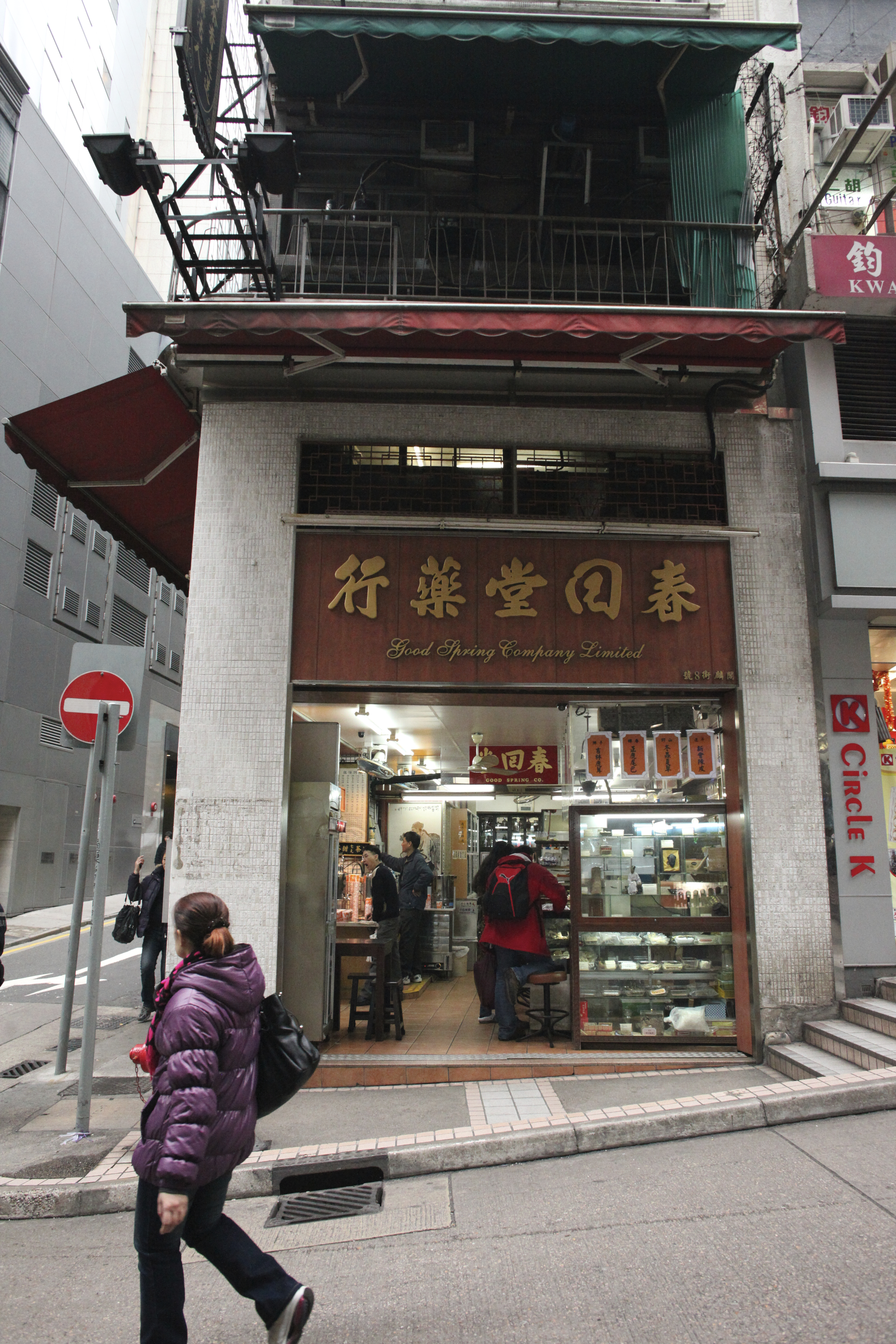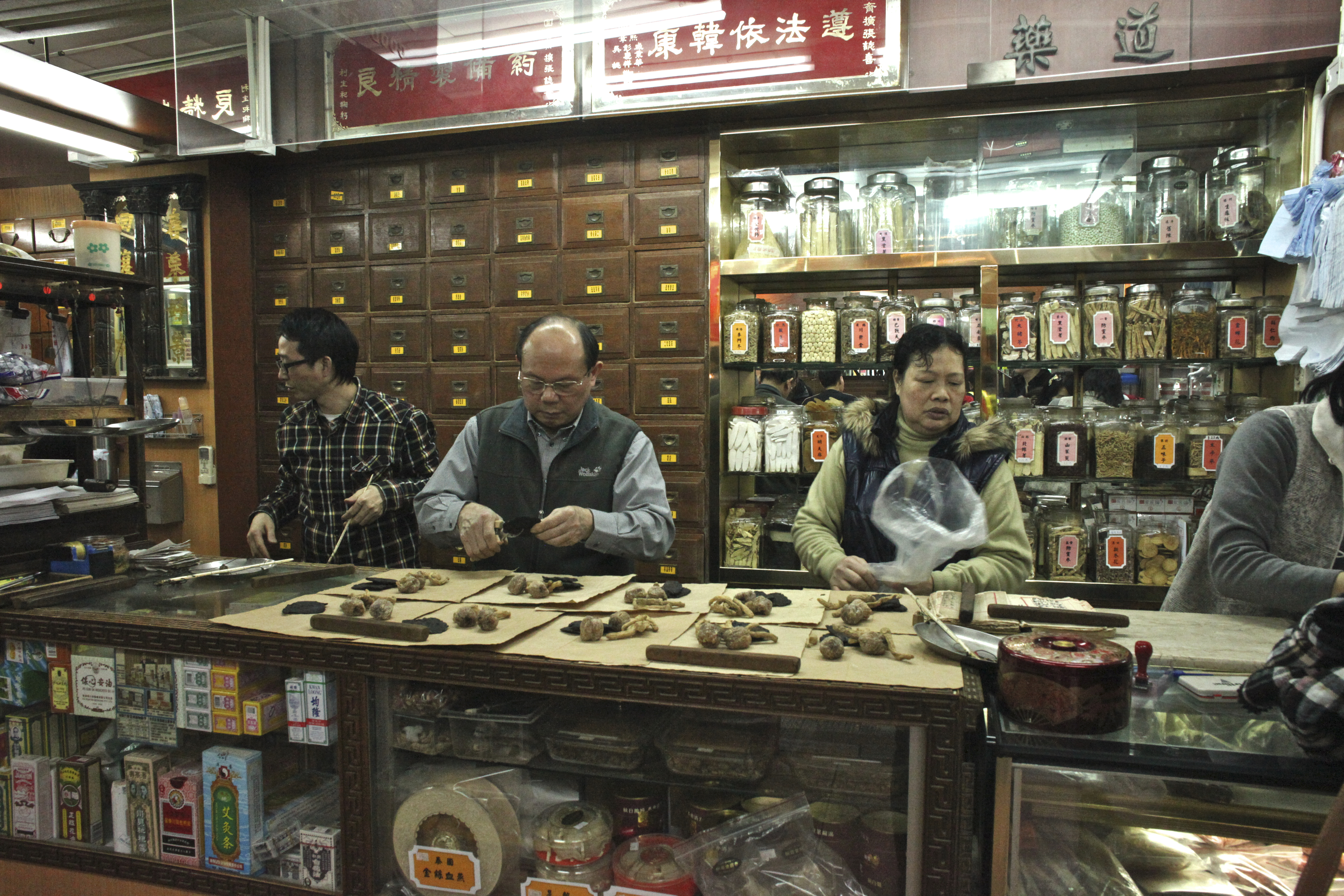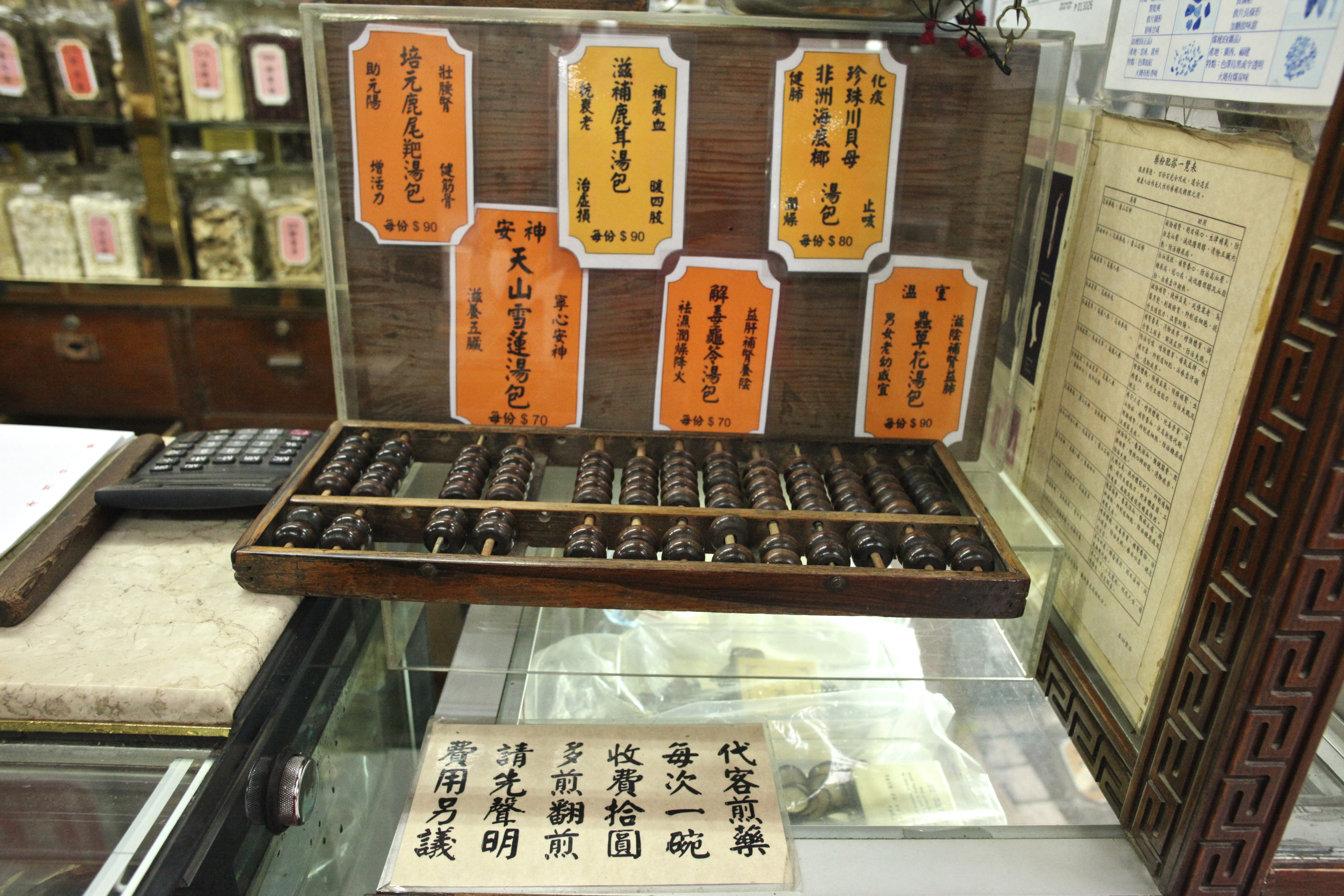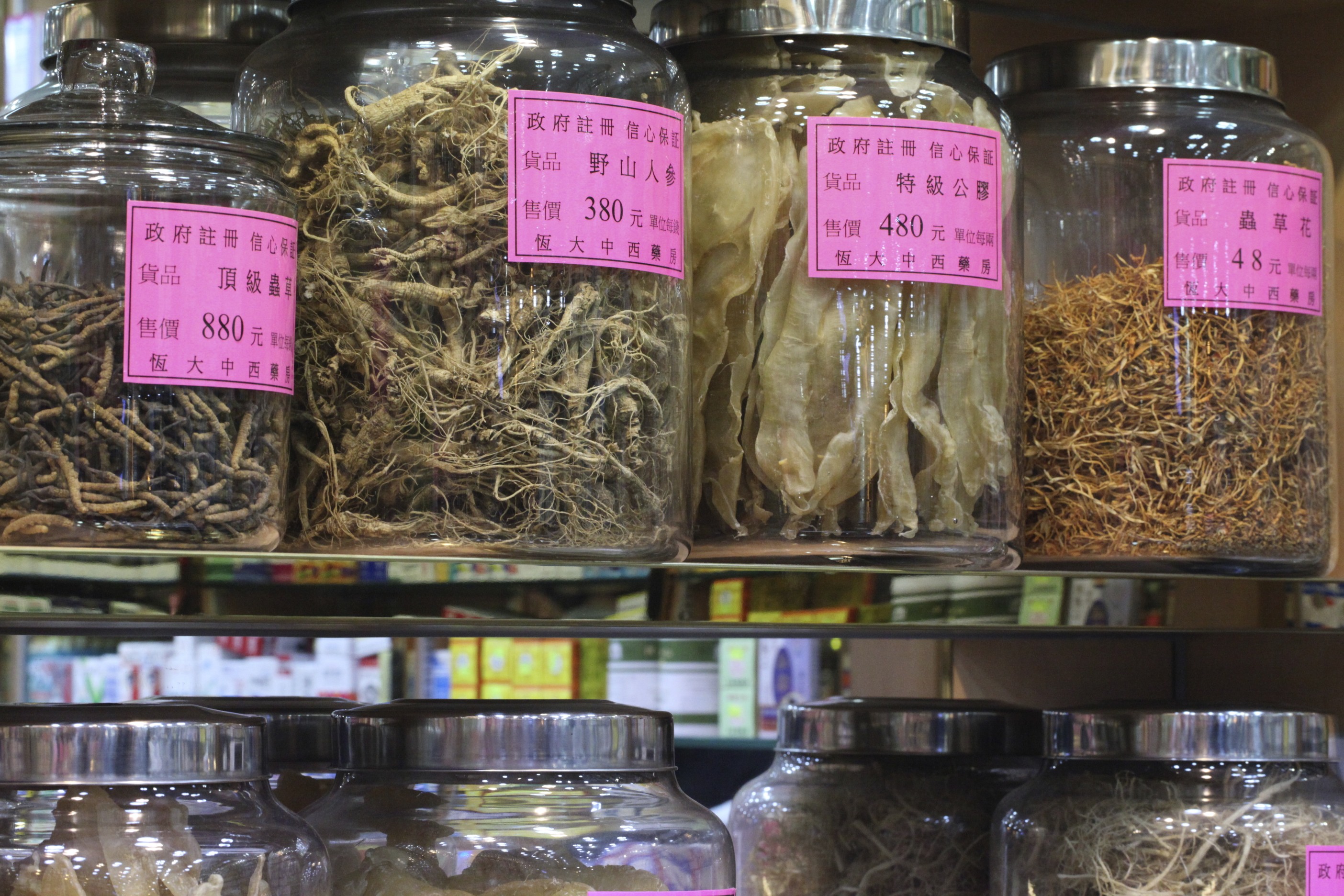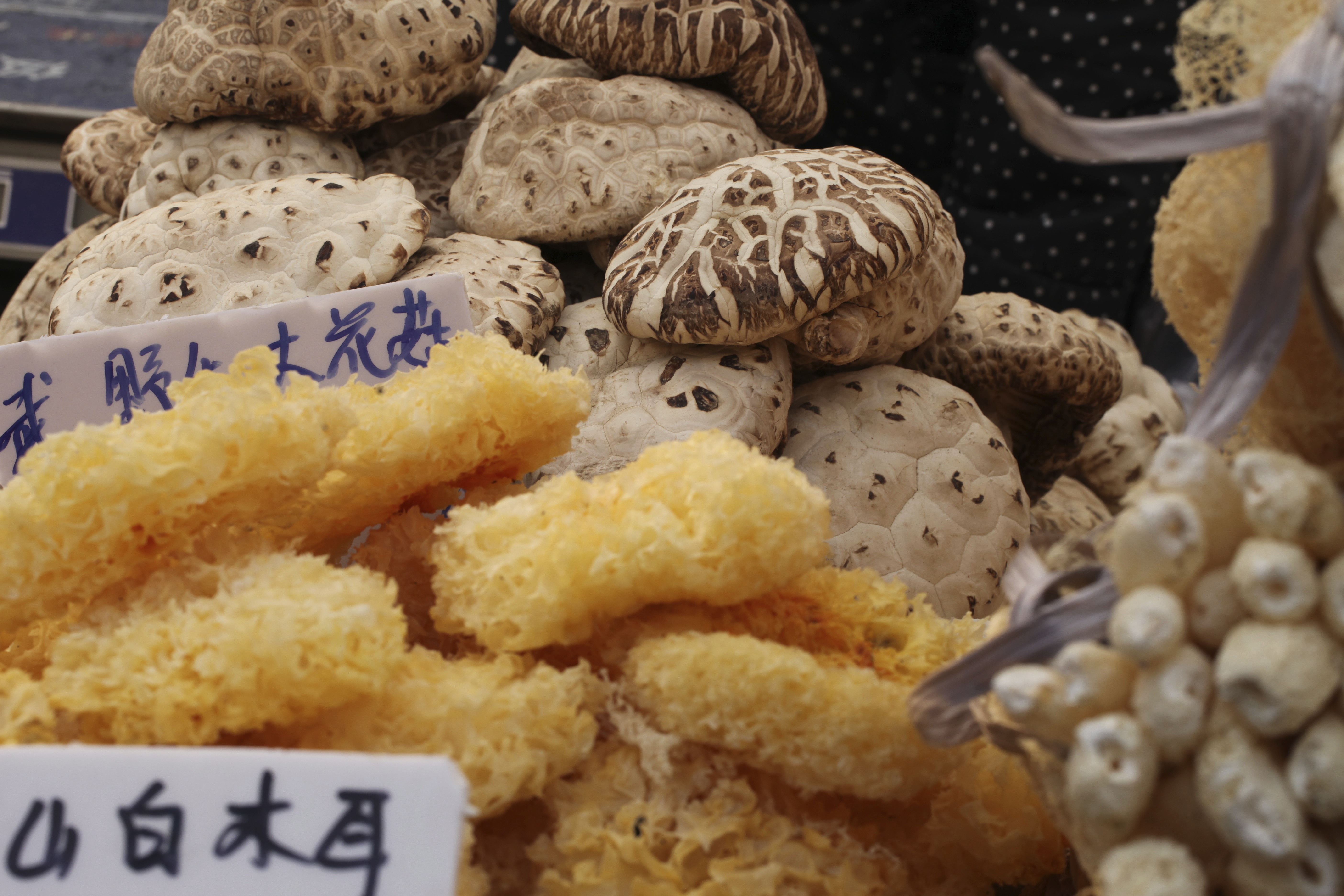Hong Kong is a unique city in terms of its history, geography, and cultural influences. In the context of Chinese medicine, Hong Kong has been a key center for herbal trading since its inception and an important center of academic exchange as well as trade as many top experts from throughout China live and work in Hong Kong.
Most traditional medicine stores cater solely to the practice of Chinese herbal medicine, with some cures dating back 2,000 years. The medicinal stock, however, includes much more than roots and plants. Take a look inside one of Hong Kong’s many medicinal shops and you’ll find a bewildering array of jars and drawers containing everything from ginseng and deer’s horn to fossilized bones and animal teeth.( Frommer’ss)
Deer’s horn is said to be effective against fever; bones, teeth, and seashells are used as tranquilizers and cures for insomnia. In prescribing treatment, herbalists take into account the patient’s overall mental and physical well-being in the belief that disease and illness are caused by an imbalance in bodily forces. In contrast to Western medicine, treatment is often preventive rather than remedial. Visitors particularly interested in traditional Chinese medicine will want to visit the Hong Kong Museum of Medical Sciences.
A number of fascinating articles and exhibits reveal the complex history of Hong Kong and its unique position in the herbal medicine trade. These facts are largely based on gleams from the fantastic introduction in Prof. Zhao Zhongzhen’s “Illustrated Chinese Materia Medica in Hong Kong.”
Prof. Zhao and his colleagues helped establish an educational park in downtown Hong Kong known as the “Garden of a Hundred Herbs” (Bai Cao Yuan), a garden has many live specimens of Chinese herbs and is situated in downtown Sheung Wan, right near the area known as the “herbal medicine street.”
During a stroll around the “Garden of a Hundred Herbs,” one can learn a number of amazing facts about herbal trade in Hong Kong. Hong Kong’s name itself means “fragrant port,” a name that stems from the fact that the fragrant Chen Xiang alternative Aquilaria sinensis was abundant in the region; extensive trade in the tree for incense and medicine was a key piece of Hong Kong’s early history.
During the era of British rule, Hong Kong was largely managed as a trading port, and growth in its Chinese herb trade took off dramatically in the 1950s. A trade embargo against China during the Korean War resulted in the need for a neutral trading hub to allow for the export of Chinese herbs and the import of precious Southeast Asian medicinal products into China. Hong Kong filled the niche and established itself as a key trading hub for Chinese herbs. Today, it is estimated that 26% of the world’s international trade in Chinese herbs moves directly through Hong Kong, and much of it passes through a single neighborhood.
Interestingly, I learned recently that the HK stores that specialized in herbal medicine used to be collectively called Nan Bei Hang (“North and South Companies”). I found this fact interesting because many herb shops in U.S. Chinatowns are called Nan Bei Hang to this day. One can find at least one store called Nan Bei (or Nam Bac in Vietnamese) in many Chinatowns around the country, and apparently the name is rooted in the Hong Kong trading culture of days gone by.
While Hong Kong has hundreds of retail shops for herbs, the central neighborhood for herbal medicine trade is on Hong Kong Island, in the part of town known as Sheung Wan. There is a street called “herbal medicine street” at the center, though the market winds through an entire neighborhood and has many treasures on little side streets. High-end products like Shi Hu, Chuan Bei Mu, and Xi Yang Shen are in abundance, and one can find any number of nice specimens by wandering through the alleys.
There are several different methods to classify traditional Chinese medicinals:
- The Four Natures
- The Five Flavors
- The meridians
- The specific function.
Four Natures
The Four Natures are: hot(?), warm(?), cool(?), cold(?) or neutral(?), in terms of temperature).[21] Hot and warm herbs are used to treat cold diseases, while cool and cold herbs are used to treat heat diseases.[21]
Five Flavors
The Five Flavors, sometimes also translated as Five Tastes, are: acrid/pungent(?), sweet(?), bitter(?), sour(?), and salty(?).Substances may also have more than one flavor, or none (i.e., a bland(?) flavor). Each of the Five Flavors corresponds to one of the zàng organs, which in turn corresponds to one of the Five Phases: A flavor implies certain properties and therapeutic actions of a substance: saltiness “drains downward and softens hard masses”;sweetness is “supplementing, harmonizing, and moistening”; pungent substances are thought to induce sweat and act on qi and blood; sourness tends to be astringent(?) in nature; bitterness “drains heat, purges the bowels, and eliminates dampness”.
This classification refers not just to the meridian, but also to the meridian-associated zàng-organ, which can be expected to be primarily affected by a given medicinal (there are 12 standard meridians in the body a medicinal can act upon). For example, traditional beliefs hold that menthol is pungent and cool and goes to the Lung and the Liver channels. The Traditional Chinese concept of the Lungs includes the function of protecting the body from colds, and menthol is thought to cool the Lungs and purge heat toxins caused by wind-heat invasion (one of the patterns of common cold). ( Eric Brand )
Joelle’s Picks:
Eu Yan Sang : Caring For Mankind
Tasting Hong Kong – a traveling guide for food lovers – Tastin-HK.com
Address:
G/F 8 Cochrane Street
Central, Hong Kong
Tel: 2544 3518
Transportation:
MTR*: Central
Cuisine: Dessert/ Chinese Herbal Tea
Payment: Cash only
Opening Hour:08:45-20:00
Herbal Medicine Street: Opening Hours Daily: 9.30am to 6pm Getting There
Herbal Medicine Street is located along Ko Shing Street in Sheung Wan on Hong Kong Island. You can take a tram heading for Kennedy Town / Whitty Street from Central. The ride should take about 7-8 minutes. Alternatively the nearest MTR station is Sheung Wan Station (Exit A2), where you will arrive first at Ginseng and Bird’s Nest Street.



